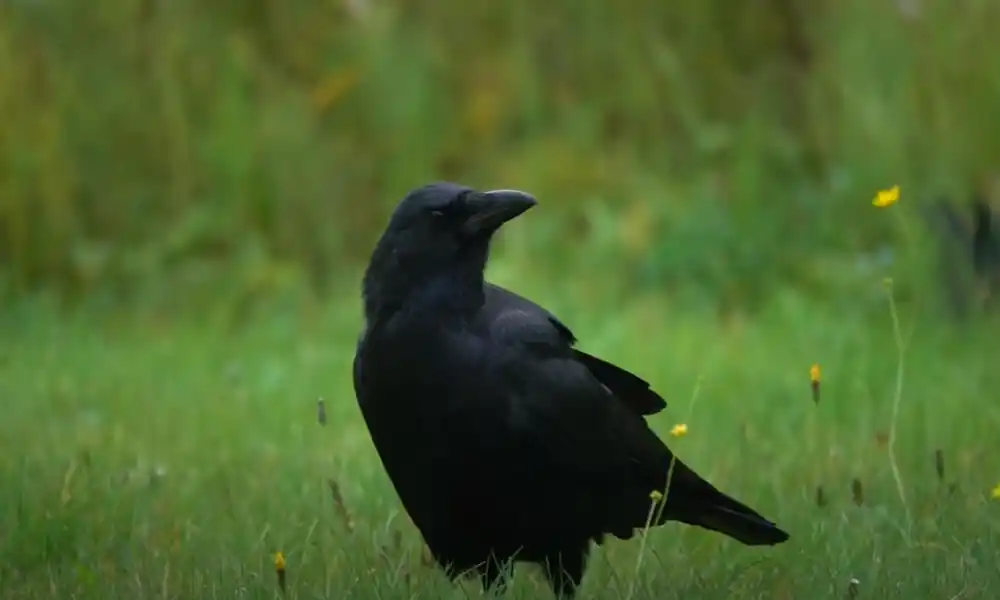Are there crows in Florida? Yes, and they’re hard to miss. These smart black birds live in cities, woods, and fields across the state. You’ll see them flying in groups or calling from the trees. Crows are native to Florida, having established their presence long before urban development. Their intelligence and adaptability have allowed them to thrive alongside human populations.
Whether you live in Florida or just visit, they’re part of daily life. Let’s take a closer look at these noisy neighbors.
Table of Contents
Are There Crows in Florida?
Yes, there are crows in Florida—and they’re everywhere once you start noticing them.
I remember the first time I realized this. I was sipping coffee in my Orlando backyard when a big black bird landed on the fence. It gave me this sideways look, like it knew something I didn’t. Then it let out a raspy “caw” that echoed through the trees. That was my introduction to Florida’s cleverest birds.
Here’s what I’ve learned over time—and trust me, it’s more than just birdwatching. It’s like sharing a neighborhood with tiny feathered masterminds.
Two Main Types of Crows in Florida
You’ll mostly spot two types of crows here in Florida:
- American Crow (Corvus brachyrhynchos)
- Fish Crow (Corvus ossifragus)
How to Tell the Difference Between American and Fish Crows
It’s not just about looks. It’s about listening, observing, and a little local know-how.
Voice (Easiest Way)
- American Crow: Deep, classic “caw-caw” sound
- Fish Crow: Softer, nasal call that sounds like “uh-uh”
Size
- American Crows: Slightly larger and heavier
- Fish Crows: Slimmer, with a smaller bill and shorter legs
Fast fact: Fish Crows are basically the American Crow’s leaner cousin with a weird voice.
Behavior
- American Crows: Found across all kinds of areas—farms, towns, suburbs
- Fish Crows: Love coastlines, marshes, and riverbanks. You’ll often see them near water.
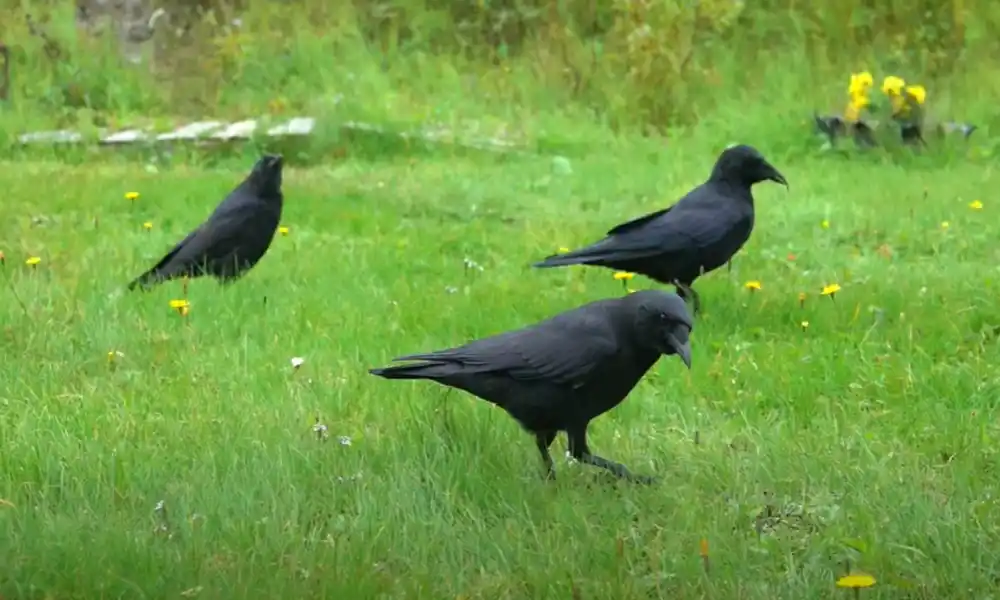
Are There Crows in Florida in the Winter?
Yes, crows remain in Florida during the winter months. Their ability to adapt to cooler temperatures allows them to stay active year-round, often forming larger communal roosts during this season.
I first noticed this during a chilly morning walk in late December. It was one of those rare “Florida cold fronts” where I actually had to wear a hoodie. As I strolled through my neighborhood in Orlando, I heard a chorus of loud “caws” overhead. Looking up, there they were—a group of crows circling like they were holding a meeting in the sky. Winter hadn’t chased them away. If anything, they were louder than usual.
Quick Answer: Florida crows don’t migrate in winter. They stick around and adjust their behavior with the seasons.
Crows in Florida Are Year-Round Residents
- Crows are non-migratory in Florida, remaining year-round residents. Their remarkable intelligence, comparable to primates, enables them to adapt to seasonal changes without the need to migrate.
- They stay active through all seasons, including winter.
- Their black feathers actually absorb sunlight, helping them stay warm even on colder mornings.
Snippet-friendly: Yes, crows live in Florida all winter long. They don’t migrate because the weather is mild enough for them to stay.
What Changes for Crows in Winter?
While they don’t leave, they do change routines a bit—kind of like how we shift into “sweater weather mode.”
- Roosting Behavior: In winter, crows gather in larger communal roosts at night—sometimes hundreds or thousands of them.
I once saw them filling up a row of pine trees behind a grocery store in Sanford. It was like a black cloud settling in before dusk. - Diet Adjustments: With fewer bugs and fruits available, they switch to what’s handy:
- Roadkill (yes, gross—but helpful!)
- Scraps from trash bins
- Leftover seeds from backyard feeders
- Even fallen acorns and palm berries
- Roadkill (yes, gross—but helpful!)
- Noisier Flocks: Honestly, they seem louder in the cooler months.
Are There Crows in Florida During the Day?
Yes, Florida crows are diurnal, meaning they’re active during daylight hours. You can observe them foraging, socializing, and engaging in various activities from sunrise to sunset. They’re what scientists call “diurnal,” but you and I would just say they’re daytime birds.
I see them most mornings right after sunrise. One time, while walking my dog around 7:15 a.m., a pair of crows were already up and busy pulling something shiny out of my neighbor’s recycling bin. It’s like they clock in earlier than most people.
What Do Florida Crows Do All Day?
Crows spend their days foraging, exploring, and doing things that honestly feel pretty human. They’re constantly on the move, checking out new spots, chatting (or squawking) with each other, and stashing snacks for later.
Here’s what I’ve noticed them doing during the day:
- Foraging for food – They dig through lawns, trash bins, and even roadkill (gross but practical).
- Mobbing hawks or owls – I once saw four crows divebomb a red-shouldered hawk right over my driveway. Total teamwork.
- Caching food – They hide snacks like peanuts or bread under leaves or in gutters. I once saw one bury a chicken nugget like it was buried treasure.
- People-watching – They literally perch and watch us go about our day. I swear one was judging my grocery choices last week.
Short answer for snippets: Yes, Florida crows stay active during daylight hours—spending time foraging, playing, and mobbing predators.
Where Do Crows in Florida Go at Night?
At night, crows head to big communal roosts where hundreds—or even thousands—gather to sleep.
I first saw one of these roosts just outside downtown Orlando. Around dusk, a stream of black silhouettes started flying toward the same cluster of trees near a shopping plaza. It looked like rush hour traffic in the sky. And the noise? It was like a noisy sleepover with zero bedtime rules.
Here’s what’s interesting about their nighttime behavior:
- They roost together for warmth and safety. Numbers mean protection from predators.
- Roosting spots are often near water or tall trees in parks or business areas.
- They return to the same roosts each night, almost like clockwork.
Snippable answer: Florida crows gather at night in large, noisy roosts—usually in tall trees near urban areas or water.
Are There Crows in Orlando and Other Florida Cities?
Yes, crows are prevalent throughout Florida, including in cities like Miami, Orlando, and across South and Central Florida. Their adaptability makes them common in both urban and rural settings.
I live in Orlando. I hear crows almost every day. They call out from trees, rooftops, and power lines. One even followed me once while I walked to get coffee. It stayed just ahead, like it was leading the way. When I looked up, it gave me this look like, “What took you so long?”
Places I’ve Seen Crows in Florida
Crows are widespread across Florida, from the panhandle to the Keys. They thrive in diverse habitats, including urban areas, wetlands, and coastal regions. Here are some spots where I often see them:
- Downtown Orlando: Sitting on streetlights or near Lake Eola
- Winter Park: Flying from tree to tree in quiet suburbs
- Parking lots: Like Target or Publix—they watch for dropped snacks
- Side streets: Perching on fences or mailboxes
- College campuses: Like UCF, where food is easy to find
Short answer: Yes, crows live in cities all across Florida. You’ll see them near homes, parks, stores, and schools.
Why Do Crows Like Cities?
Crows are smart. Cities give them what they need. It’s like an all-you-can-eat buffet with plenty of places to sleep.
- Food: Trash, crumbs, roadkill—they’re not picky
- Trees and rooftops: Safe spots to nest and rest
- Warm air: Cities stay warmer at night
- Few predators: Less danger from hawks or other threats
- People: We drop food, and they clean it up
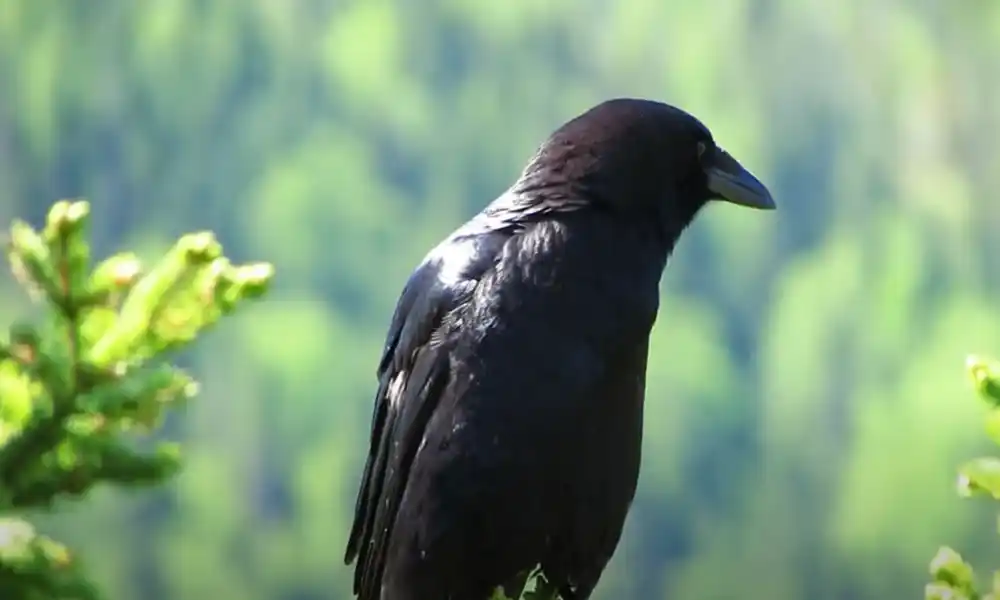
Does Florida Have Crows or Ravens?
Florida is home to numerous crows, while ravens are exceptionally rare in the state. If you believe you’ve spotted a raven in Florida, it’s most likely a crow.
I Thought I Saw a Raven… But Nope
I still remember the first time I thought I spotted a raven in Orlando. It was a huge black bird perched on a power line, with its feathers ruffling in the wind. I even said to my friend, “That has to be a raven, right?”
We looked it up. Turns out—it was a crow. Just a big crow. A few days later, I heard it call. That classic “caw” gave it away.
Quick tip: If it sounds like a raspy “caw,” it’s almost always a crow in Florida.
Crow vs. Raven: Easy Comparison
Here’s a quick side-by-side to help you know for sure:
| Feature | American Crow | Common Raven |
|---|---|---|
| Size | Medium (17–21 inches long) | Larger (24–27 inches long) |
| Tail Shape | Fan-shaped in flight | Wedge-shaped in flight |
| Call | Sharp, repetitive “caw-caw” | Deep, croaky “gronk” or “tok” |
| Habitat in Florida | Common statewide | Rare; primarily in western/mountainous regions |
| Flight Pattern | Frequent wing flaps | Soaring and gliding |
Let me know if you want to add visuals or fun facts to go with it!
Snippet-friendly answer: Crows are common across Florida, while ravens are rare and mostly found in western or mountainous areas.
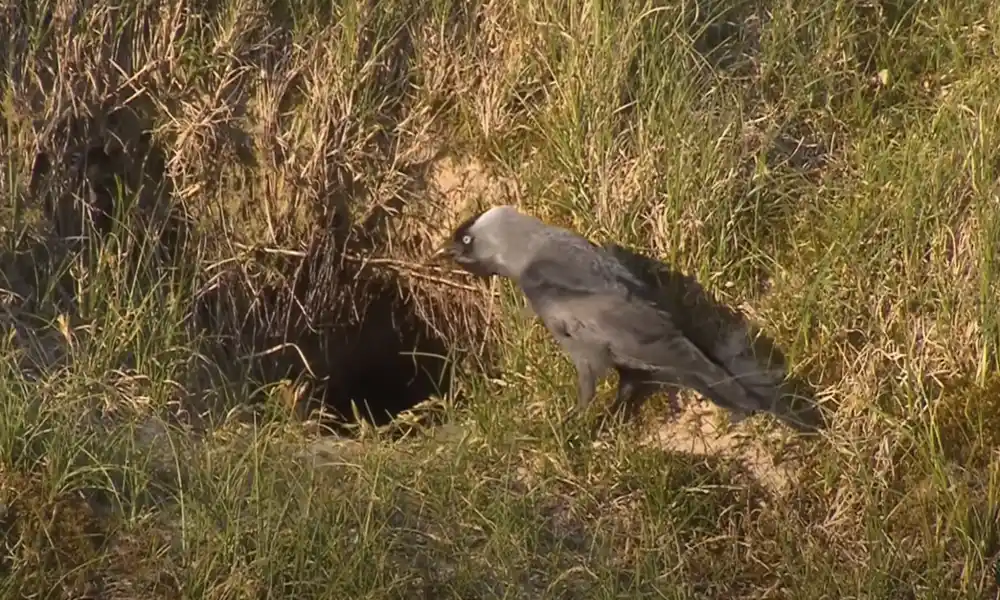
So, Why Don’t We See Ravens in Florida?
It’s not that they can’t survive here—but Florida just isn’t their scene.
- Ravens prefer mountains and big, open wildlands
- Florida’s flat, swampy terrain doesn’t match their needs
- Urban and suburban zones are better for crows, who are great at city life
Answer: Florida’s landscape suits crows, not ravens—so you’re much more likely to spot crows here.
How I Tell the Difference (In Real Life)
Honestly? I go by sound first.
- If it says “caw,” it’s a crow.
- If it sounds deep, croaky, or echoes like a drumbeat—it might be a raven.
But again, in Florida? I bet on crow every time.
One time in Gainesville, I heard a weird croaky sound that made me pause. I turned around—and sure enough, it was just a fish crow, doing its nasal “uh-uh” thing.
Types of Crows in Florida
Yes, there are two main types of crows you’ll run into here in Florida—and once you learn their differences, spotting them becomes way more fun.
American Crow (Corvus brachyrhynchos)
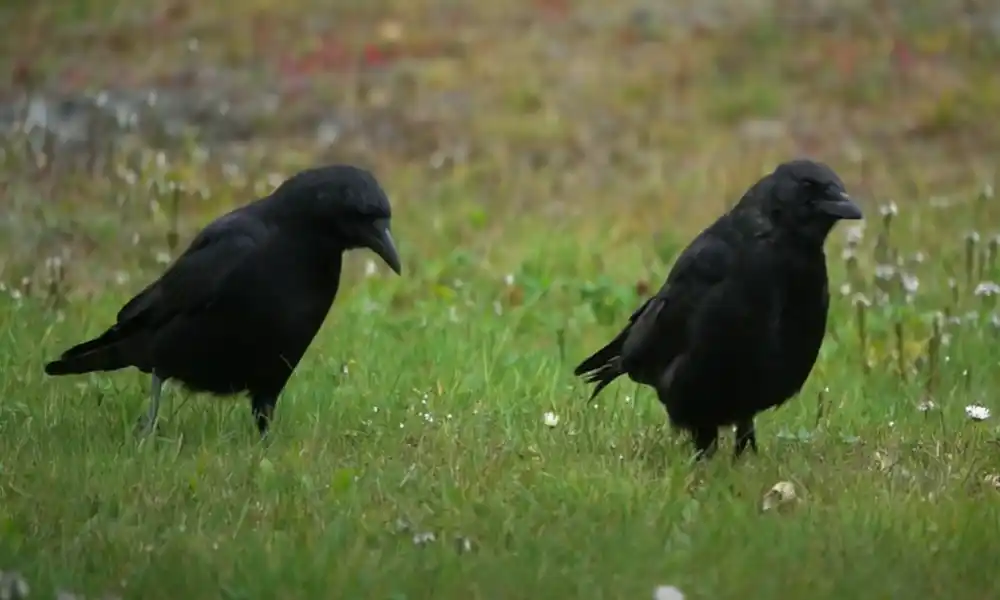
Where to Find Them:
You’ll see these guys pretty much everywhere.
- Neighborhood trees
- Schoolyards
- Roadside fences
- Even parking lots
- American Crows live across Florida, from cities to farmlands.
The Sound:
They’ve got that classic, raspy “caw-caw” you hear in old cartoons.
- Loud
- Deep
- Straight-up bossy
Personal Note:
There’s one that hangs out near my driveway. I call him “Carl.” He caws like he owns the block—and honestly, he kinda does. He once scared off a squirrel that tried to mess with my bird feeder. Total enforcer.
Fish Crow (Corvus ossifragus)
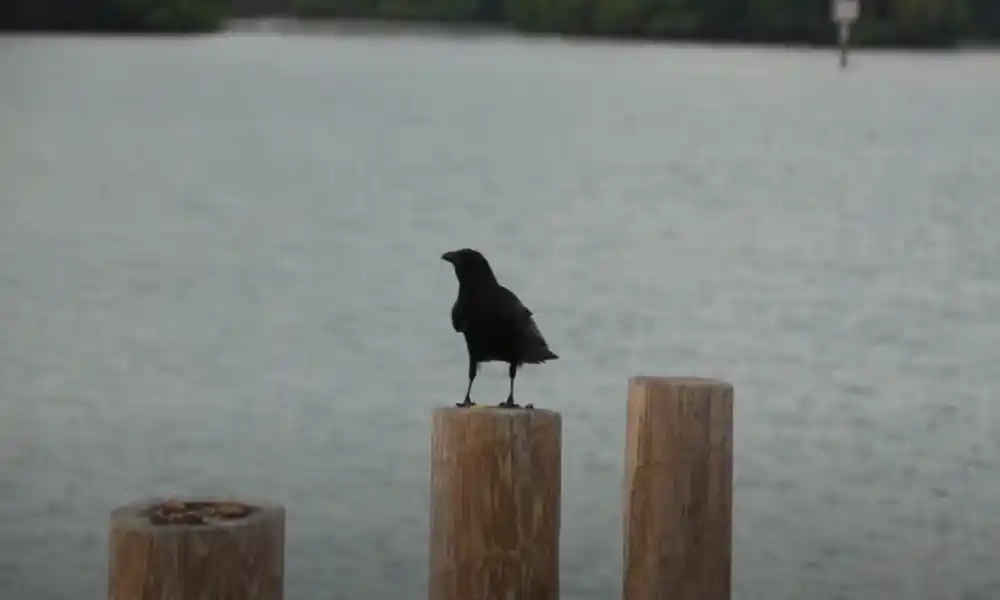
Where to Find Them:
If you’re near water, look (and listen) closely. Fish Crows love:
- Wetlands
- Marshes
- Rivers and lakes
- Coastal areas
Fish Crows prefer Florida’s wetlands and coastal spots—especially where there’s water and tall trees.
The Sound:
This is the biggest giveaway. They don’t say “caw.” They sound like they’re laughing through their nose—“uh-uh” or “ah-ah.”
- Softer
- Nasal
- Kind of like a duck with attitude
Personal Moment:
The first time I heard one, I actually laughed out loud. I thought someone nearby was fake-coughing. Nope—it was a Fish Crow sitting on a dock piling, giving me side-eye like I was the weird one.
Behavior Differences at a Glance
While they might look almost the same, here’s how I tell them apart in real life:
- Voice is Key:
- American Crow = “Caw-caw”
- Fish Crow = “Uh-uh”
- American Crow = “Caw-caw”
- Size:
- Fish Crows are slimmer with shorter legs
- American Crows are stockier and stand taller
- Fish Crows are slimmer with shorter legs
- Habitat:
- American Crows = Everywhere, even downtown
- Fish Crows = Near water, especially in the mornings
- American Crows = Everywhere, even downtown
To tell Florida’s crows apart, listen to the call. “Caw” means American Crow, while “uh-uh” means Fish Crow.
21 Fascinating Facts About Crows in Florida
Yes, crows are smart—but you won’t believe just how clever and quirky they really are. I’ve watched them do things that made me stop, stare, and even laugh out loud. These birds aren’t just part of the background—they’re little geniuses in black feathers.
Here are 21 fun, weird, and surprisingly touching facts I’ve learned from watching crows across Florida:
- Crows use tools.
Yes, real tools! I saw one poke a stick into a soda can to fish out something sticky. Wild, right? - They recognize human faces.
True story: I waved at one every morning. After a week, it started flying over when it saw me. Creepy? A little. Cool? Definitely. - They form lifelong family bonds.
Crow families stick together for years. I once watched a young crow bring food to what looked like its older, limping parent. That one got me in the feels. - Crows cache food for later.
I saw one bury a chicken nugget in my front yard mulch like it was gold. Later that week—yep, it came back and dug it up. - They play games.
Ever seen a crow drop a twig mid-air, then dive to catch it again? It’s like they invented fetch. - They mimic sounds—including people.
One Fish Crow near the lake started making a noise that sounded just like my dog’s squeaky toy. I looked around thinking I dropped it! - Crows hold “funerals” for their dead.
When a crow dies, others gather and caw loudly. I’ve seen this once—at least a dozen showed up. It was intense. - They mob predators.
Hawks, owls, you name it—crows team up to drive them away. I once saw four crows chase off a red-shouldered hawk from my street. - Crows can count.
Studies show they know the difference between one, two, and three. I swear one waited for my dog to go back inside before raiding his food bowl. - They remember who’s nice—and who’s not.
If you feed them, they remember. If you yell at them? They remember that too. Choose wisely. - Crows make and pass down traditions.
One group near me dunks crackers in puddles before eating. Now all the crows on my block do it too. Trendsetters. - They enjoy sliding down snowy roofs.
Okay, not in Florida. But crows up north have been filmed sliding for fun—like feathered sledders. - They’re left- or right-beaked.
Like being left-handed! Crows often favor one side when holding or digging with their beaks. - Crow brains are as big (for their size) as chimps’.
That’s science. No wonder they seem to outsmart us sometimes. - They can imitate car alarms.
I heard one outside my window doing a near-perfect “beep-beep.” Had me looking for a break-in. - Crows learn from each other.
Young crows watch older ones solve problems. Like bird school—but cooler. - They hold grudges across generations.
One study showed crows warned their kids about a “bad human” years later. That’s some deep family gossip. - Florida crows love shiny stuff.
I once lost a bracelet. Weeks later, I saw it in a crow’s nest. Stylish thieves. - They’re amazing parents.
Both parents feed and protect the babies. Even older siblings pitch in. Total family teamwork. - They follow garbage trucks.
Not kidding. I’ve seen them trail behind like it’s a food parade. Smart scavengers.
Some crows “talk” to pets.
My friend’s cat has a crow “buddy” that perches nearby and squawks at it daily. We joke they’re having deep conversations.
Are there crows in Florida year-round?
Yes! Crows live in Florida all year. You’ll spot them in cities, forests, and even near beaches. Learn more about their habits and hangouts.
Are crows in Florida smart birds?
Absolutely—Florida crows are incredibly smart. They use tools, remember faces, and even play games. Learn more about their wild intelligence.
Are there crows in Florida that mimic sounds?
Yes, especially Fish Crows. They can copy car alarms, bird calls, and more. Some even sound like squeaky toys! Learn more about their voice tricks.
Are there crows in Florida cities too?
You bet. Crows thrive in cities like Tampa, Orlando, and Miami. They adapt fast and love people-watching. Learn more about where they live.
Are crows in Florida aggressive or friendly?
They’re bold but not mean. Most Florida crows are just curious. If you feed them, they might even visit daily. Learn more about crow behavior.
Conclusion
So, are there crows in Florida? Yes—lots of them. They thrive in cities, parks, and wild places. You might hear their caws or see them fly by. These smart birds are part of Florida’s wild charm. If you slow down and look up, you’ll spot them. Crows are clever, bold, and fun to watch. Keep an eye out—they’re closer than you think.
Also Read: Why the Bird Black and White Red Breast Amazed Me
I still remember the day that sparked my love for birds. I was just a kid, sitting in my backyard, when a tiny bird landed near me. It moved so fast, its feathers flashing in the sunlight, and then it sang—soft, clear, and almost magical. In that moment, birds became more than just creatures in the sky. They became a mystery I wanted to solve.
That curiosity never faded. It led me to study Biology at the University of Scranton, where I dove deep into the science of birds—their behavior, their calls, and the incredible ways they survive. Today, that same passion drives me, and through Earth of Birds, I get to share it with you.
Discover more from Earth of Birds
Subscribe to get the latest posts sent to your email.

